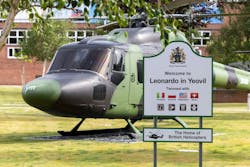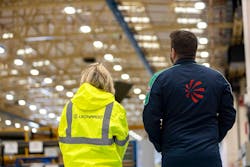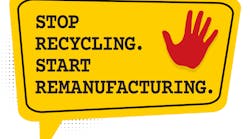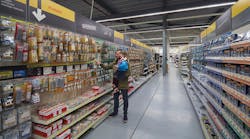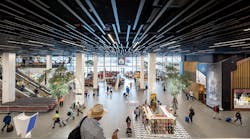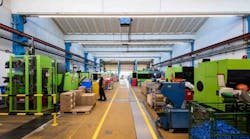Helicopter factory avoids upfront LED costs via 10-year service deal
The upfront costs of LED lighting can dissuade buyers from switching to the energy-saving technology. Alternatively, users could forgo the expenditure by locking into a service deal in which the vendor retains ownership of the lights, charges yearly, and handles end-of-life arrangements.
That’s what the British helicopter arm of Italian defense firm Leonardo did.
Leonardo UK committed to a 10-year contract with Signify in which the Dutch lighting giant is installing indoor LED lighting across 14 buildings at Leonardo’s helicopter manufacturing site in Yeovil, England. The deployment, now nearly complete, includes Signify’s Interact lighting management system, which is an internet-connected control scheme that makes use of sensors and software that keep lights off when not needed and dims them when enough natural light is present.
The contract guarantees light-level performance over 10 years.
Leonardo cited carbon reduction and environmental sustainability as the driver behind its decision to switch to around 10,000 LED light fittings from the existing lighting, which was a mix of conventional lighting — mostly fluorescent — as well as earlier-generation LEDs. Energy savings was also a factor, as Leonardo’s electric bill has declined by between 50% and 80% per building, depending on the type of lighting previously used. In some cases Signify replaced lighting on a one-to-one basis, and in others it reduced the number of fittings.
Installation began in the summer of 2022 with one building and now includes twelve. Completion of the final two are on course for the end of this year. Compliance with what in 2022 was an upcoming ban on new fluorescent lighting in the U.K. also played a role Leonardo’s move to LED.
While a purchase arrangement might not have suited Leonardo’s budget, the annual fee in the lighting as a service (LaaS) pact with Eindhoven-based Signify did.
“Saving energy and minimizing waste are two ways we manage our environmental footprint to help preserve our planet for future generations,” said Paul Coombs, vice president of facilities, real estate and infrastructure projects for Leonardo Helicopters UK, which is part of Rome-based Leonardo S.p.A. “The LaaS model provided by Signify gave us the option to do both in an innovative way with no capital outlay.”
With Signify retaining ownership of the goods, the 10-year deal includes four end-of-life options: Leonardo can return the lights to Signify for disposal, recycling, or re-use; it can purchase the lights; it can agree to a new LaaS contract in which Signify installs new lighting; or it can upgrade the existing lighting with new drivers, sensors, and boards, on either an LaaS or a purchase basis.
End-of-life is rapidly becoming a pressing issue in the lighting industry in the face of environmental objectives.
Signify has been enduring a slump in sales of indoor professional lighting which has persisted in Europe, so an invigorated LaaS push could provide a way to reverse that trend.
“In the traditional method of lighting procurement, organizations get their lighting by purchasing and maintaining their lighting equipment,” said Derk Bots, Signify’s commercial leader for Europe office & industry. “Light as a service turns this around and encourages organizations to take a step towards a more sustainable future by making the switch to LED lighting or upgrading their systems to connected lighting and reap the benefits of data and IoT, so they can create spaces that adapt to their needs, making them more efficient, connected, and sustainable.”
Neither company revealed the annual fee that Leonardo is paying.
Follow our LinkedIn page for our latest news updates, contributed articles, and commentary, and our Facebook page for events announcements and more. You can also find us on the X platform.

Mark Halper | Contributing Editor, LEDs Magazine, and Business/Energy/Technology Journalist
Mark Halper is a freelance business, technology, and science journalist who covers everything from media moguls to subatomic particles. Halper has written from locations around the world for TIME Magazine, Fortune, Forbes, the New York Times, the Financial Times, the Guardian, CBS, Wired, and many others. A US citizen living in Britain, he cut his journalism teeth cutting and pasting copy for an English-language daily newspaper in Mexico City. Halper has a BA in history from Cornell University.
